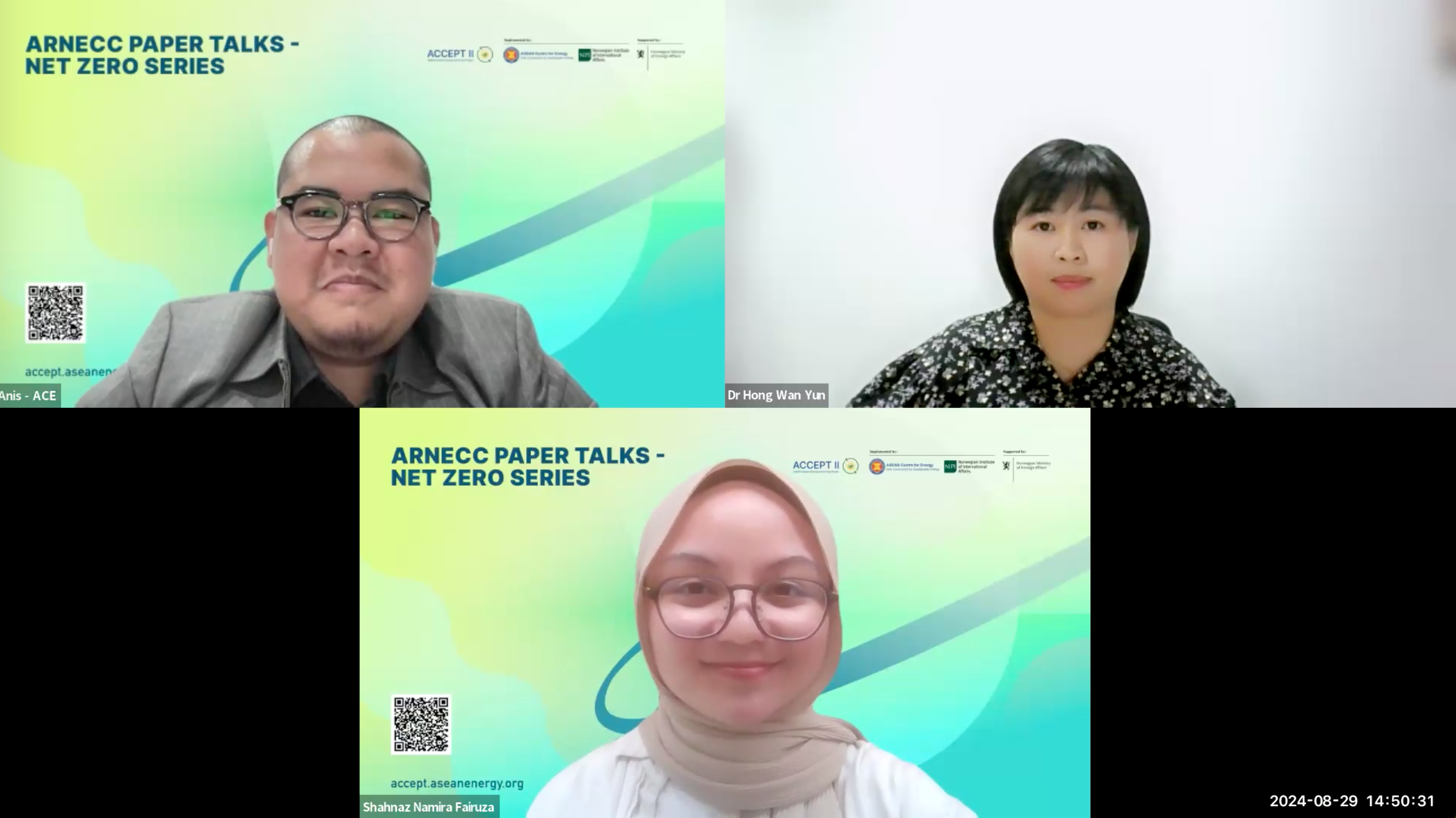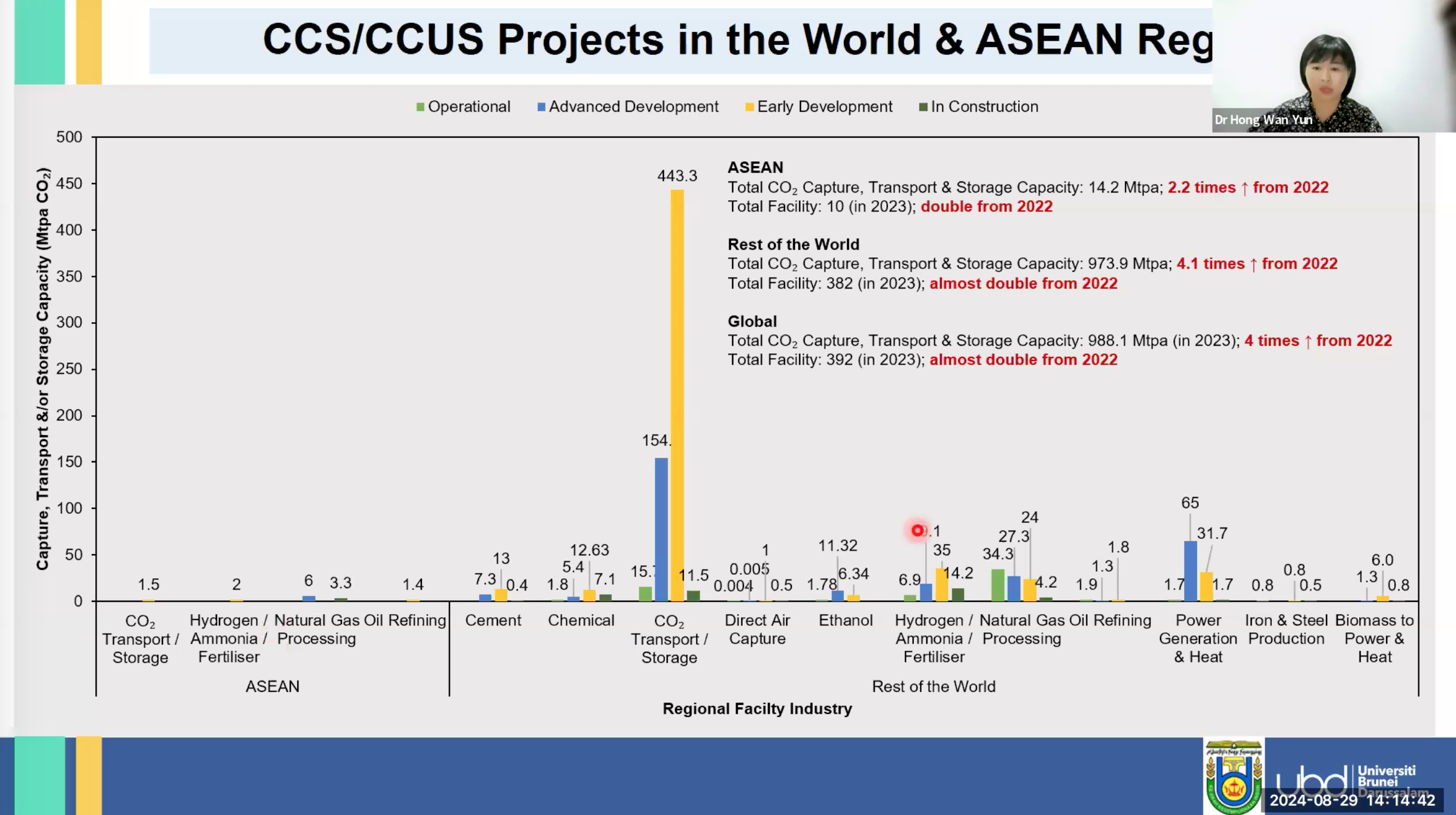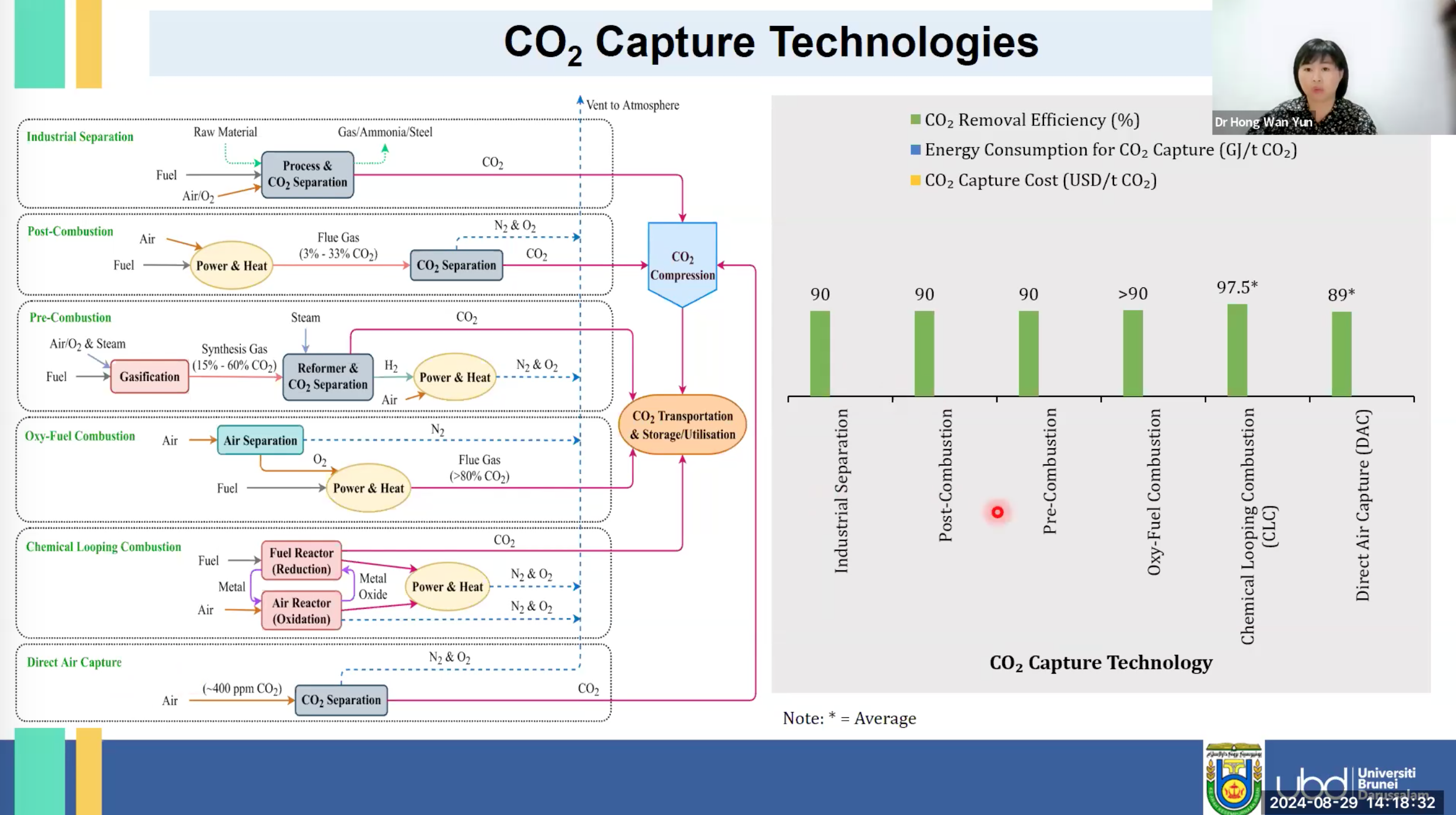i
i
Online, 24 August 2024
ARNECC Paper Talks is back with its tenth episode on Thursday, August 29th, 2024. This monthly virtual discussion series is the flagship activity of the ASEAN Researchers Network on Energy and Climate Change (ARNECC), a knowledge-sharing platform on energy-climate and decarbonisation for members of academia which was established by the ASEAN Climate Change and Energy Project (ACCEPT). In this episode, Dr Wan Yun Hong from Universiti Brunei Darussalam presented her research on “A techno economic review on carbon-capture, utilisation, and storage systems (CCUS) for achieving a net zero CO2 emissions future”. Her study provides a comprehensive overview of the technical and economic aspects of CCUS systems. The episode is featured Shahnaz Namira Fairuza, Research Assistant for ACCEPT II, as the Master of Ceremony, and Muhammad Anis Zhafran, Junior Associate Research Analyst at the ASEAN Centre for Energy, as the moderator.

Figure 1. Dr Wan Yun Hong from Universiti Brunei Darussalam as the speaker (top right), Muhammad Anis Zahfran from ASEAN Centre for Energy as the moderator (top left), Shahnaz Namira Fairuza from ACCEPT II as the Master of Ceremony (bottom)
To achieve the Paris Agreement’s goal of limiting global warming to 1.5°C above pre-industrial levels, a strong global standard for climate action is essential. In this case, carbon capture, utilisation, and storage (CCUS) has emerged as a key technology in reducing CO2 emissions worldwide. However, Dr Wan’s research reveals that the current deployment of CCUS is insufficient. CO2 emissions from human activities continue to outpace CO2 removal, leading to a rise in atmospheric CO2 levels which contributes to global warming and climate change. Hence, Dr Wan’s study was designed to assess the potential of CCUS as a tool while considering various aspects in the system such as capture techniques, separation methods, transport, utilisation, and storage.

Figure 2. Amount of CCUS projects in ASEAN and the rest of the world
The study unveils that although the amount of CO2 capture, transport, and storage capacity in ASEAN has doubled since 2022, its number is still relatively small on a global scale, standing at 14.2 Mtpa in ASEAN compared to 973.9 Mtpa in the rest of the world. To date, ASEAN CCUS projects are also still limited in range, with only 10 CCUS facilities across four regional industries which are CO2 transport and storage, hydrogen ammonia / fertiliser, natural gas processing, and oil refining.
The analysis covered various aspects of CO2 capture, separation, transport, utilisation, and storage technologies, comparing their technological readiness level (TRL), CO2 removal efficiency, energy consumption, and costs. Key CO2 capture methods included industrial separation, post-combustion, pre-combustion, oxy-fuel combustion, chemical looping combustion, and direct air capture. CO2 separation techniques such as absorption, adsorption, membrane separation, cryogenic processes, and biological methods were also examined. The research also looked at CO2 transportation methods, including pipelines, ships, trucks, and rail. It then explored CO2 utilisation pathways, focusing on both direct use and conversion into other products. Finally, the paper covered various CO2 storage options, such as storage through CO2-enhanced oil recovery (EOR), in depleted oil and gas fields, saline formations, basalt and ultramafic rocks, coal seams via enhanced coal bed methane recovery (ECBM), and in the deep ocean.

Figure 3. Types of CO2 capture technologies
During the Q&A session, Dr Wan addressed the possibility of capturing CO2 from industries without the use of chemicals. She explained that this is possible by selecting the appropriate CO2 utilisation method. One example she provided is the use of microalgae, which absorbs CO2 through photosynthesis, similar to how plants function. Another example she highlighted is the absorption of CO2 by seawater, which naturally dissolves and stores carbon dioxide. Dr Wan also commented on financing for CCUS/CCS projects in ASEAN, pointing to Singapore, Thailand, and Malaysia as leading examples with existing investments and mobilised funding for research and development. She expressed hope that more ASEAN countries will follow suit, especially on the possibility of a regional CCUS blueprint for ASEAN in the future.
To conclude, Dr Wan emphasised that CCUS is promising as tool to reduce carbon emissions and achieve global climate targets, but its application remains inhibited by challenges and the lack of global deployment in the ASEAN region. The study suggested a possible solution would be the deployment of a hybrid CCUS system that involves two or more processes for CO2 capture, separation, transport, utilisation, and/or storage. This approach may be able to increase the overall performance of the CCUS system, but further investigation is required to assess its technical and economic feasibility for industry applications. As a way forward, Dr Wan noted that more research and development are necessary to improve CCUS efficiency to make them more cost-effective and scalable as a technology.
(AZD)
Join our ASEAN Researchers Network on Climate Change (ARNECC) by registering yourself here. Become a part of our collaborative efforts to address pressing climate challenges and shape a sustainable future.
Detailed information on ACCEPT II can be found at https://accept.aseanenergy.org/
Follow our social media to stay updated on ASEAN’s energy-climate nexus and ACCEPT activities.
Instagram: instagram.com/asean_accept
X: x.com/asean_accept
We welcome any future collaborations. Please feel free to contact us at [email protected]